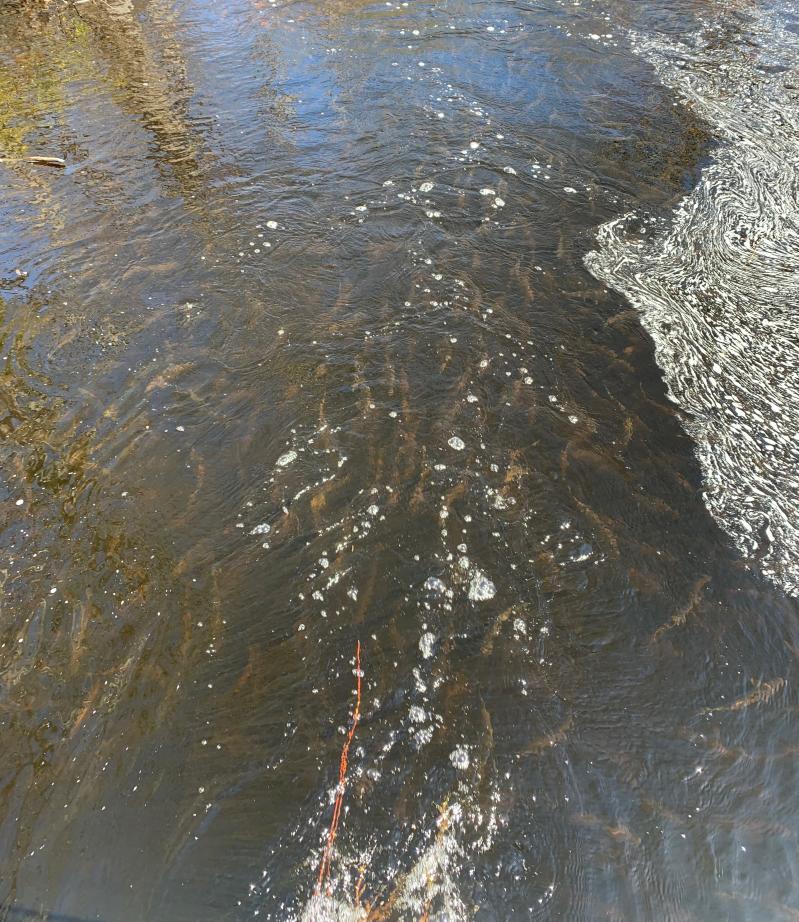Maybe you’re someone who gladly takes nature in small doses. Or maybe you’re someone simply gladdened by wildlife no matter where you find it.
Either way, urbanized or countrified, the sight of creatures gamely hanging on in a built environment is strangely moving. And in the greater Riverhead area? Double that emotion.
Across the concrete four-lane that is County Road 51, a stone’s throw from the dated and homely functionality of the Evans K. Griffing County Center, a straightforward bit of engineering helps an adorable fish, the alewife, rise to its freshwater spawning ground.
Yes, “fresh” despite the trash-strewn roadside woods nearby, an area that might benefit (not to be callous about it) from the cleanup labor (duly compensated, of course) of a few of the incarcerated souls a short jaunt down the pike at the county jail.
Those determined fish, otherwise known as river herring, face a culvert and a dam, the Woodhull Dam, but they still need to get where they’re going, so a sluiceway was somewhat elaborately, you might say ingeniously, constructed about three years ago. There’s even an accompanying passageway for eels.
Up over the Woodhull Dam the other day, on the Little River, you could spy several rather alarmingly large egrets, and beyond them, atop a gentle rise, a cottage with a screened-in porch giving onto this quiet waterway, which winds its way from Wildwood Lake — site of the late, lamented Wildwood Lanes and its bowling leagues and Riverhead High School reunions — northeast to the Peconic River. You couldn’t get there by kayak, but the alewives can.
Next to the fish conveyance, an informative sign, with the life cycle of the alewife attractively rendered by one Steve Tar, tells us that such dams were built “in the late 1800s and early 1900s” on “nearly all Long Island freshwater tributaries for grist mills” — yes! — “cranberry bogs, and other industrial uses,” thus inadvertently cutting off these fish that are happy to kick it in both fresh and salt water.
Last week the alewives that gathered at this Byron Young Fish Passage appeared dense enough to walk across. The namesake, a retired state fisheries biologist, used to count the fish before carting them by hand across the dam.
You wouldn’t call it federalism, but with the involvement or funding of the U.S. Fish and Wildlife Service on down to the State D.E.C., Suffolk County Parks, and Southampton Town, and laterally over to environmental groups like Seatuck and the Peconic Estuary Partnership (none of that in order of importance, by the way), this was a multifarious project.
Who says government can’t work?

